Turkey, where East meets West, offers more than just rich history and delicious cuisine it’s home to some of the most breathtaking beaches in the Mediterranean region. From the turquoise waters of the Aegean to the golden sands of the Mediterranean coast, Turkey’s 5,000+ miles of coastline provide beach experiences for every type of traveler.
This comprehensive guide showcases the absolute best beaches Turkey has to offer in 2025/2026. Whether you’re planning a family vacation, a romantic getaway, or an adventure-filled trip, Turkey’s diverse beaches won’t disappoint.
Turkey boasts stunning beaches like Ölüdeniz, Kaputaş, and Iztuzu, known for their turquoise waters and beautiful scenery. While the Aegean and Mediterranean coasts host the majority of Turkey’s premier beaches, we’ll also introduce you to a few Black Sea gems worth exploring.
How We Chose These Beaches / What Makes a Best Beach?
To compile this definitive list of Turkey best beaches, we evaluated each location based on several key criteria:
- Natural Beauty: Scenic value, water clarity, and surrounding landscape
- Water Quality: Cleanliness and color of the sea
- Beach Quality: Sand type, cleanliness, and comfort
- Accessibility: How easy it is to reach the beach
- Facilities: Available amenities like restaurants, bathrooms, and sunbeds
- Uniqueness: What makes each beach special or distinctive
- User Reviews: Feedback from travelers and locals alike
The Best Beaches in Turkey
Ölüdeniz
⭐ Key Info Box / At-a-Glance:
- Location: Muğla Province, near Fethiye
- Coastline: Mediterranean
- Best For: Photography, Paragliding, Families
- Sand Type: Fine Pebble/Sand Mix
- Water Quality: Crystal Clear Turquoise
- Facilities: Restaurants, Cafes, Sunbeds, Umbrellas, Toilets, Showers
- Accessibility: Easy access, Parking available
Why It’s Special:
Ölüdeniz isn’t just Turkey’s most famous beach; it’s one of the most photographed beaches in the world. The stunning blue lagoon with its calm, shallow waters creates a perfect natural swimming pool. The beach curves gracefully alongside Mount Babadağ, offering paragliding enthusiasts the perfect launch point to soar above this magnificent coastline. The main beach extends into the protected Blue Lagoon area, where the contrast between turquoise waters and the lush green mountains creates a postcard-perfect scene.
Insider Tips / What to Know:
Visit early in the morning or later in the afternoon to avoid the crowds, especially during high season (July-August). The Blue Lagoon section has an entrance fee but is worth it for the calm, shallow waters—ideal for families with small children. For the most spectacular views, take a paragliding trip from Babadağ Mountain.
Getting There:
Located just 14km from Fethiye town, Ölüdeniz is easily accessible by dolmuş (minibus) running every 15-20 minutes in season. If driving, follow signs from Fethiye and use the public parking areas near the beach.
Kaputaş Beach
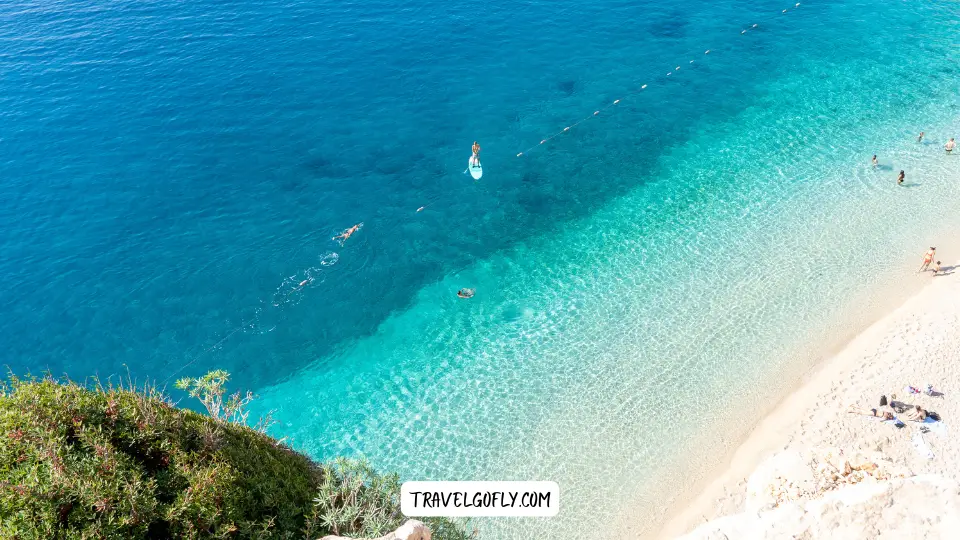 ⭐ Key Info Box / At-a-Glance:
⭐ Key Info Box / At-a-Glance:
- Location: Antalya Province, between Kaş and Kalkan
- Coastline: Mediterranean
- Best For: Photography, Couples, Adventure Seekers
- Sand Type: Small Pebble/Coarse Sand Mix
- Water Quality: Vibrant Turquoise
- Facilities: Limited (Seasonal beach bar, Portable toilets)
- Accessibility: 187 steps down cliff, Roadside parking
Why It’s Special:
Kaputaş Beach is nature’s perfect amphitheater a small golden cove nestled between dramatic cliffs where a mountain gorge meets the sea. The water here displays an almost impossible shade of electric blue that has to be seen to be believed. The beach’s relatively small size and the effort required to access it create an intimate, rewarding experience that feels like discovering a secret slice of paradise.
Insider Tips / What to Know:
Visit in June or September to avoid high-season crowds. The beach has strong currents, so be careful when swimming, especially with children. There’s little shade, so bring an umbrella if you plan to stay all day. Water shoes can be helpful as the beach becomes more pebbly at the water edge.
Getting There:
Located approximately halfway between Kaş and Kalkan, the beach is visible from the coastal road with a small parking area available. Be prepared for the 187 steps down (and later, up!) from the highway to the beach.
Iztuzu Beach (Turtle Beach)
 ⭐ Key Info Box / At-a-Glance:
⭐ Key Info Box / At-a-Glance:
- Location: Muğla Province, near Dalyan
- Coastline: Mediterranean
- Best For: Wildlife, Nature Lovers, Families
- Sand Type: Fine Golden Sand
- Water Quality: Clear Blue
- Facilities: Beach Cafes, Toilets, Showers, Limited Sunbeds
- Accessibility: Public boat from Dalyan or shuttle bus
Why It’s Special:
Iztuzu Beach is one of Turkey most important conservation success stories. This 4.5km stretch of golden sand creates a natural barrier between the Mediterranean Sea and Dalyan River delta. It’s famous as a protected nesting site for endangered loggerhead turtles (Caretta caretta). The unique location allows visitors to swim in both fresh river water and the sea on the same beach. The backdrop of reed beds, pine forests, and mountains makes this one of Turkey’s most beautiful natural settings.
Insider Tips / What to Know:
The beach is closed at night during turtle nesting season (May-October). Visit the small turtle rehabilitation center at the beach entrance to learn about conservation efforts. The southern end tends to be quieter. Swimming in the first 50m from shore is safest as there can be currents further out.
Getting There:
Take the 30-minute public boat trip from Dalyan town through the reed channels (a beautiful journey in itself) or use the shuttle bus service that approaches from the opposite end of the beach.
Cleopatra Beach (Kleopatra Beach)
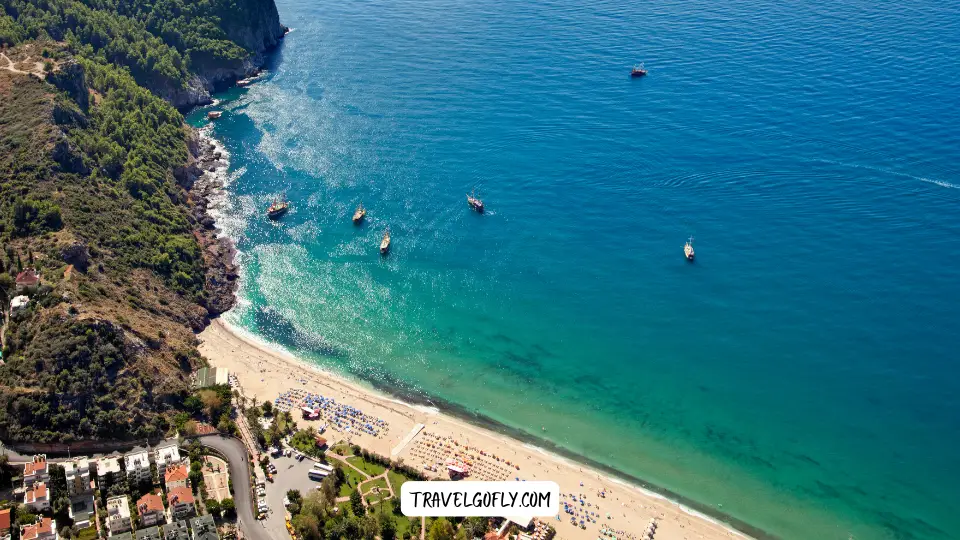 ⭐ Key Info Box / At-a-Glance:
⭐ Key Info Box / At-a-Glance:
- Location: Antalya Province, Alanya
- Coastline: Mediterranean
- Best For: Families, Swimming, Urban Beach Experience
- Sand Type: Fine Golden Sand
- Water Quality: Clear Blue
- Facilities: Full amenities (Restaurants, Cafes, Watersports, Showers, Toilets)
- Accessibility: Very easy, Central location
Why It’s Special:
Legend claims that Mark Antony gifted this beach to Cleopatra, importing the uniquely fine sand from Egypt (though geologists dispute this romantic tale). What’s undeniable is the 2.5km of stunning golden sand that makes this one of Turkey best urban beaches. The backdrop of Alanya Castle on the rocky peninsula creates a dramatic contrast to the beach gentle shoreline, while the water remains remarkably clean despite its popularity.
Insider Tips / What to Know:
The western end is typically less crowded. Early mornings offer the most peaceful experience. Many beach clubs offer loungers for a fee, but there are also free public sections. Watersports are available along the entire stretch, with better rates usually found away from the central areas.
Getting There:
Located right in Alanya, the beach is within walking distance of most city accommodations. Public transportation and taxis can easily reach it from anywhere in the city.
Patara Beach
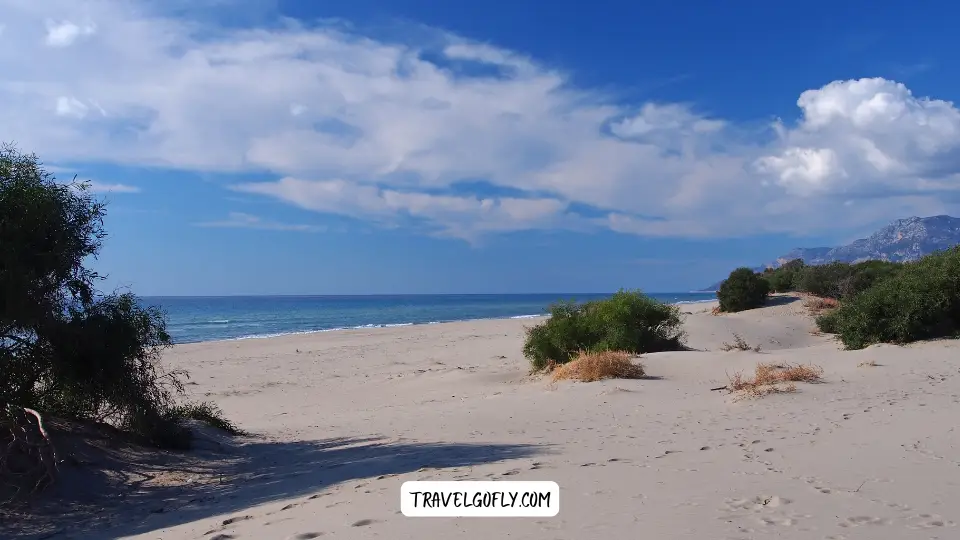 ⭐ Key Info Box / At-a-Glance:
⭐ Key Info Box / At-a-Glance:
- Location: Antalya Province, near Gelemiş village
- Coastline: Mediterranean
- Best For: History Buffs, Long Walks, Privacy Seekers
- Sand Type: Fine Golden Sand
- Water Quality: Clear Blue
- Facilities: Basic (Small cafe, Toilets, Limited sunbeds near entrance)
- Accessibility: Short walk from parking area through ancient ruins
Why It’s Special:
At 18km long, Patara is Turkey longest beach and one of its most impressive. Protected as part of a national park, the beach remains undeveloped except for a small section with basic facilities. The ancient Lycian city of Patara borders the beach, allowing visitors to combine history and beach time. As a protected nesting site for loggerhead turtles, the expansive shoreline offers plenty of space for visitors to spread out and find their own private stretch of paradise.
Insider Tips / What to Know:
The beach entrance fee includes access to the ancient ruins, making this an excellent value two-in-one visit. Walk just 10 minutes along the beach to escape any crowds near the entrance. Be careful of strong winds and currents when swimming. There’s very little natural shade, so bring an umbrella or rent one at the entrance area.
Getting There:
Located about 40km from Kaş and 15km from Kalkan, reach Patara by taking a dolmuş to Gelemiş village, then walk or take the shuttle to the beach entrance through the ancient city gates.
Butterfly Valley Beach
 ⭐ Key Info Box / At-a-Glance:
⭐ Key Info Box / At-a-Glance:
- Location: Muğla Province, near Fethiye
- Coastline: Mediterranean
- Best For: Nature Lovers, Free Spirits, Adventure Seekers
- Sand Type: Pebble/Sand Mix
- Water Quality: Pristine Turquoise
- Facilities: Basic eco-facilities (Simple restaurants, Camping)
- Accessibility: Boat access or challenging hike down steep trail
Why It’s Special:
Butterfly Valley (Kelebekler Vadisi) is a natural reserve nestled between towering cliffs that plunge dramatically into the sea. Named for the diverse butterfly species found in the canyon, this secluded beach offers a bohemian atmosphere unlike anywhere else in Turkey. The valley behind the beach features a small waterfall and lush vegetation, creating a microclimate that supports unique flora and fauna. The beach maintains its natural character with simple eco-accommodations and a low-impact philosophy.
Insider Tips / What to Know:
Regular boat services run from Ölüdeniz during summer months. The hiking path down is very steep and not recommended for inexperienced hikers or those with fear of heights. Consider staying overnight in the valley’s simple accommodations for a truly immersive experience. The beach gets shade early in the afternoon due to the surrounding cliffs.
Getting There:
Most visitors arrive via regular boat service from Ölüdeniz or private boat tours from Fethiye. The adventurous can hike down from the road above, but this requires proper footwear and experience.
Cirali Beach
 ⭐ Key Info Box / At-a-Glance:
⭐ Key Info Box / At-a-Glance:
- Location: Antalya Province, Kemer district
- Coastline: Mediterranean
- Best For: Families, Nature Lovers, History Buffs
- Sand Type: Mixed Pebble/Sand
- Water Quality: Clean, Clear Blue
- Facilities: Low-key restaurants, Toilets, Limited sunbeds
- Accessibility: Easy road access, Parking available
Why It’s Special:
Cirali offers a rare combination of natural beauty, history, and ecological significance. This 3.5km beach sits adjacent to the ancient ruins of Olympos and near the Chimaera eternal flames, a natural phenomenon where methane gases emerge and ignite from the mountainside. Protected as a nesting site for sea turtles, Cirali maintains its authentic, rustic charm with building restrictions that prevent large resort development. The result is a peaceful beach experience where small family-run pensions and restaurants create a relaxed atmosphere.
Insider Tips / What to Know:
Visit the Chimaera flames in the evening for the most impressive experience. The south end of the beach connects to Olympos, where you can explore ancient ruins right next to the shore. The central and northern sections tend to be quieter. Many accommodations are within walking distance of the beach, making Cirali an excellent base for several days.
Getting There:
Located about 80km southwest of Antalya, Cirali is accessible by car via a turn-off from the main coastal highway. Limited dolmuş services run from Antalya during summer months.
Kabak Beach
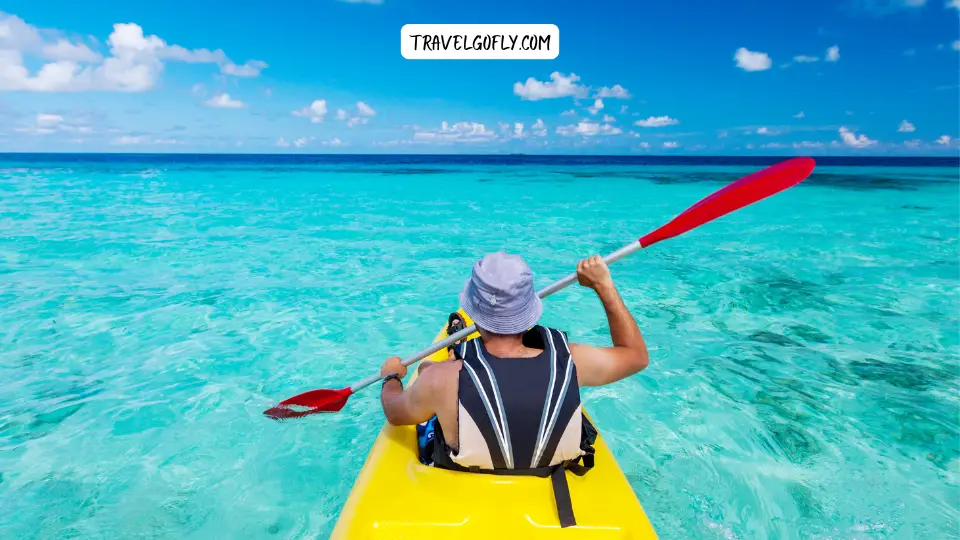 ⭐ Key Info Box / At-a-Glance:
⭐ Key Info Box / At-a-Glance:
- Location: Muğla Province, south of Faralya village
- Coastline: Mediterranean
- Best For: Off-the-beaten-path Travelers, Nature Lovers
- Sand Type: Pebble/Sand Mix
- Water Quality: Pristine Turquoise
- Facilities: Basic (Few eco-friendly cafes)
- Accessibility: Moderate hike down valley or shuttle from village
Why It’s Special:
Kabak represents the Mediterranean as it once was a secluded bay surrounded by pine forests and mountains with minimal development. The small beach sits at the bottom of a lush valley where a handful of eco-camps and yoga retreats have created a peaceful community focused on sustainable tourism. The bay’s clear waters are perfect for swimming and snorkeling, while the surrounding forests offer hiking opportunities with spectacular views.
Insider Tips / What to Know:
The hike down takes about 30-40 minutes and requires decent footwear. Most accommodations are simple wooden bungalows or tents, so adjust expectations accordingly. The beach offers little shade in the middle of the day. Consider staying overnight to experience the magical sunset and peaceful atmosphere after day visitors leave.
Getting There:
Take a dolmuş from Fethiye to Faralya village, then either hike down or use the shuttle service provided by some accommodations. With a private vehicle, park at the top of the valley and hike down or use the shuttle.
Konyaaltı Beach
 ⭐ Key Info Box / At-a-Glance:
⭐ Key Info Box / At-a-Glance:
- Location: Antalya city
- Coastline: Mediterranean
- Best For: Urban Beach Experience, Facilities, Accessibility
- Sand Type: Small Pebbles
- Water Quality: Clean Blue
- Facilities: Full urban amenities (Restaurants, Cafes, Shops, Watersports)
- Accessibility: Excellent (Public transport, Walking paths, Parking)
Why It’s Special:
Konyaaltı offers the perfect balance between urban convenience and natural beauty. This 7km-long beach stretches west from Antalya city center against the dramatic backdrop of the Beydağları mountains. Recently renovated, the beach park features modern facilities while maintaining plenty of open space. The shoreline’s pebble composition creates exceptionally clear water, as sand doesn’t cloud the sea even on windy days. The beach’s Blue Flag status attests to its cleanliness despite its urban location.
Insider Tips / What to Know:
The western sections tend to be less crowded. Early mornings and evenings offer the most pleasant temperatures and atmosphere. The nearby Beach Park complex provides excellent dining options. The pebbles can be uncomfortable underfoot, so water shoes are recommended. The beach has safe, gradual entry into the water, making it suitable for families despite the pebbles.
Getting There:
Tram line runs directly to the beach from central Antalya. Abundant public parking is available along the beach boulevard. Many hotels are within walking distance.
Çalış Beach
 ⭐ Key Info Box / At-a-Glance:
⭐ Key Info Box / At-a-Glance:
- Location: Muğla Province, Fethiye
- Coastline: Mediterranean
- Best For: Families, Sunset Views, Accessibility
- Sand Type: Dark Sand/Fine Pebble Mix
- Water Quality: Clean Blue
- Facilities: Full amenities (Restaurants, Bars, Shops, Watersports)
- Accessibility: Excellent (Flat promenade, Public transport)
Why It’s Special:
Çalış Beach is famous for having some of the most spectacular sunsets in Turkey. The 4km stretch of coastline offers a relaxed atmosphere with a charming promenade lined with restaurants and cafes. Unlike many Turkish beaches, Çalış faces directly west, creating perfect sunset viewing conditions as the sun dips below the islands on the horizon. The shallow waters and gentle slope make it particularly family-friendly, while the steady afternoon breeze attracts windsurfers.
Insider Tips / What to Know:
Reserve a table at a beachfront restaurant around sunset the views are truly spectacular. The northern end of the beach is typically quieter. The sea can be wavy in the afternoon when the wind picks up (great for windsurfing but less ideal for small children). The water taxi to Fethiye town is both practical and scenic.
Getting There:
Located 5km from Fethiye center, reach Çalış by dolmuş, water taxi (during summer), or a pleasant 40-minute walk along the seaside promenade from Fethiye.
Olympos Beach
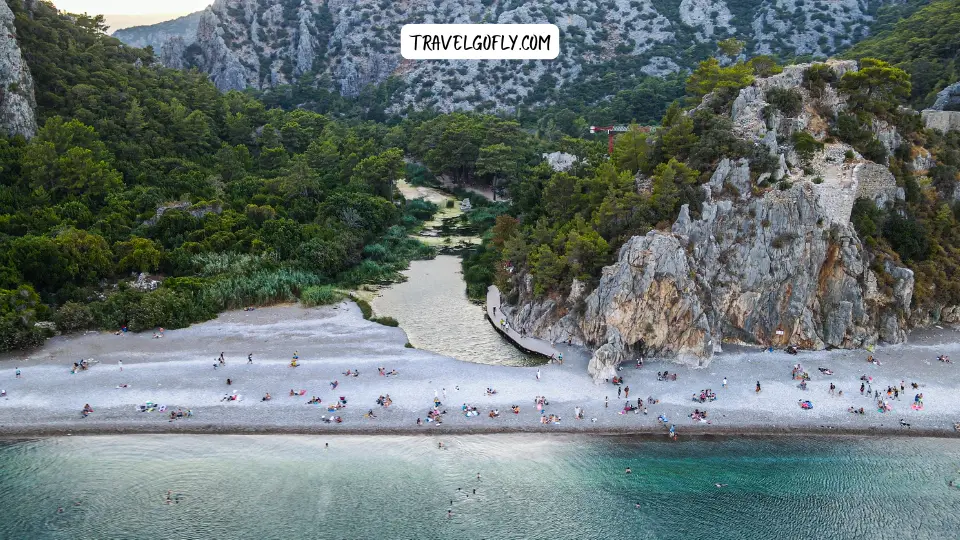 ⭐ Key Info Box / At-a-Glance:
⭐ Key Info Box / At-a-Glance:
- Location: Antalya Province, south of Kemer
- Coastline: Mediterranean
- Best For: Backpackers, History Lovers, Alternative Vibe
- Sand Type: Mixed Sand/Pebble
- Water Quality: Clear Blue-Green
- Facilities: Basic (Small cafes, Tree house accommodations)
- Accessibility: Moderate (Walk through ancient city ruins)
Why It’s Special:
Olympos offers a unique blend of beach, history, and counterculture atmosphere. The beach sits at the mouth of a stream valley where ancient Lycian and Roman ruins spill right onto the shore. The area became famous in the 1990s for its tree house accommodations and alternative vibe, which it maintains today, albeit with more amenities. The mix of young travelers, ancient history, and natural beauty creates an atmosphere unlike any other beach destination in Turkey.
Insider Tips / What to Know:
Stay in one of the traditional tree houses for the full Olympos experience. Visit the ancient ruins in early morning when temperatures are cooler and fewer people are around. The beach gets busy during the day with tour boats, so early morning or late afternoon offers more peaceful swimming. Combine with a night visit to the nearby Chimaera eternal flames.
Getting There:
Located about 90km southwest of Antalya, reach Olympos by dolmuş from Antalya or nearby towns. The beach requires a short walk through the ancient city, for which there’s a small entrance fee (which covers both beach access and archaeological site).
Icmeler Beach
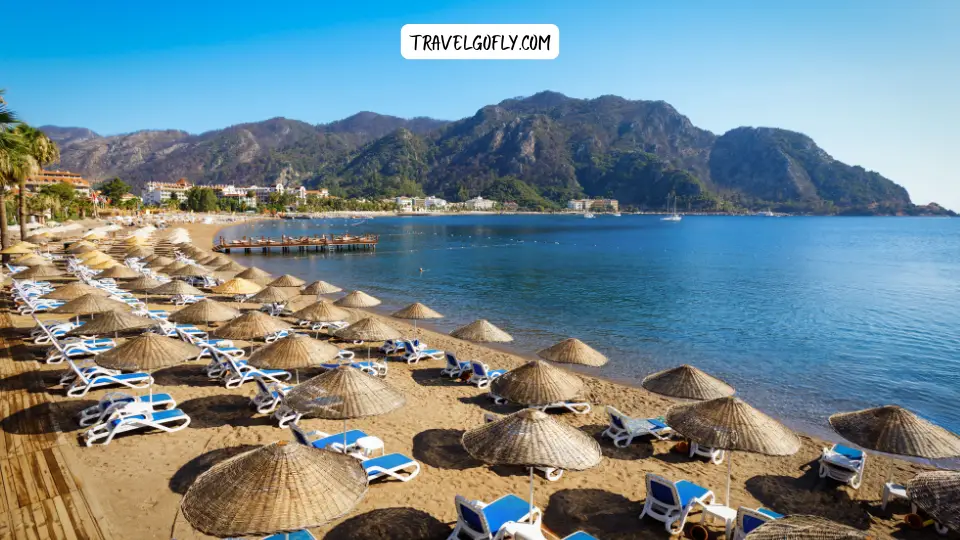 ⭐ Key Info Box / At-a-Glance:
⭐ Key Info Box / At-a-Glance:
- Location: Muğla Province, adjacent to Marmaris
- Coastline: Aegean-Mediterranean Junction
- Best For: Families, Water Sports, Scenery
- Sand Type: Golden Sand
- Water Quality: Clear, Calm Blue
- Facilities: Full resort amenities
- Accessibility: Excellent, Walkable promenade
Why It’s Special:
Icmeler Beach curves gently around a sheltered bay surrounded by pine-clad mountains on three sides. The setting is considerably more scenic than neighboring Marmaris, yet it offers all the conveniences of a developed resort area. The bay’s protected nature creates calm, shallow waters perfect for families with children. The well-maintained beach promenade connects directly to Marmaris via a scenic seaside path, offering the best of both worlds a relaxed beach experience with easy access to a larger town.
Insider Tips / What to Know:
The northern end tends to be quieter. The water remains shallow for a considerable distance, making it ideal for children. Water sports are available but concentrated in designated areas to maintain peaceful swimming zones. The scenic walk to Marmaris takes about an hour and is particularly pleasant in the evening.
Getting There:
Located 8km from Marmaris center, Icmeler is easily reached by frequent dolmuş services. Many visitors stay directly in Icmeler, which has developed into a popular resort area with numerous accommodations.
Lara Beach
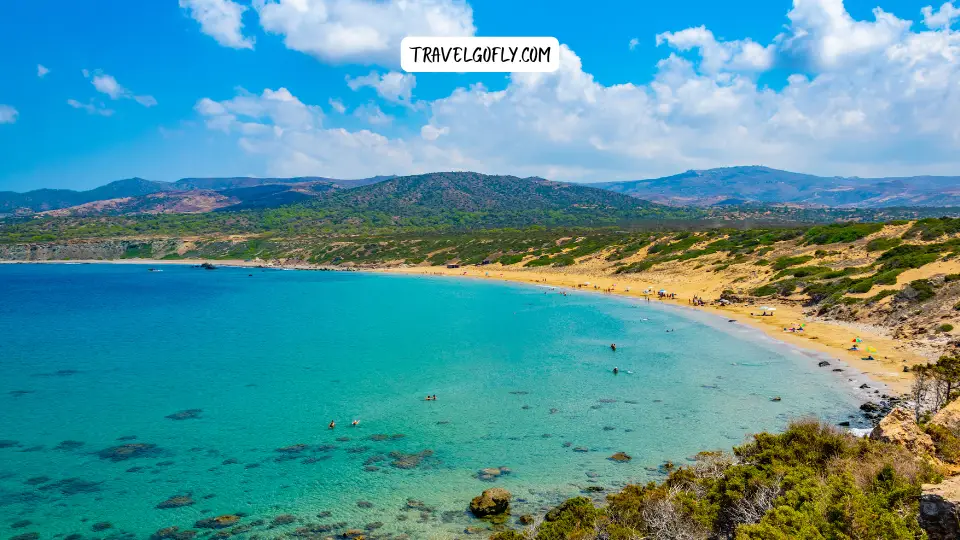 ⭐ Key Info Box / At-a-Glance:
⭐ Key Info Box / At-a-Glance:
- Location: Antalya Province, east of Antalya city
- Coastline: Mediterranean
- Best For: Luxury Resort Experience, Families
- Sand Type: Golden Sand
- Water Quality: Clean Blue
- Facilities: Premium resort amenities
- Accessibility: Excellent (Public transport, Taxi)
Why It’s Special:
Lara Beach represents the pinnacle of Turkey’s resort beach experience, with a 12km stretch of golden sand hosting some of the country’s most luxurious all-inclusive resorts. Often called the “Turkish Las Vegas” due to its themed hotels, Lara offers pristine beach conditions with full service amenities. Despite the development, the beach maintains excellent water quality and has received Blue Flag certification. The sand quality here is exceptional for the region, with fine golden particles that create a comfortable beach experience.
Insider Tips / What to Know:
While much of the beach is affiliated with resorts, there are public access points with facilities for day visitors. The section near the Duden River’s seaside waterfall offers a unique backdrop for swimming. The beach can be windy in the afternoon, creating good conditions for watersports but requiring beach umbrellas to be secured properly.
Getting There:
Located about 16km east of Antalya center, Lara Beach is accessible by public bus from the city or taxi. Many visitors stay at the all-inclusive resorts along the beach.
Side East Beach
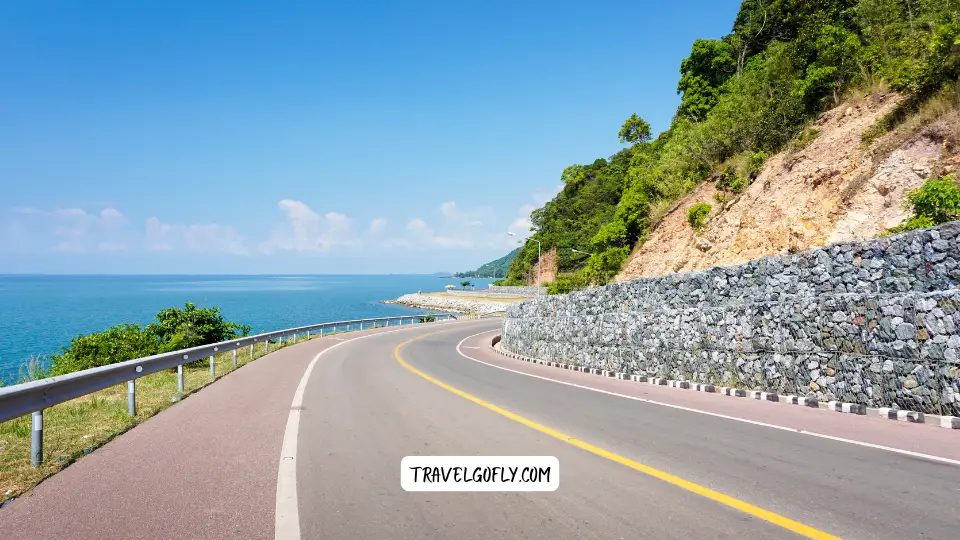 ⭐ Key Info Box / At-a-Glance:
⭐ Key Info Box / At-a-Glance:
- Location: Antalya Province, Side
- Coastline: Mediterranean
- Best For: Families, History Lovers, Accessible Luxury
- Sand Type: Fine Golden Sand
- Water Quality: Clean Blue, Shallow
- Facilities: Full amenities
- Accessibility: Excellent, Walking distance from town
Why It’s Special:
Side East Beach combines historical significance with beach relaxation in a way few destinations can match. The 3km stretch of golden sand extends east from the ancient Side peninsula, offering panoramic views of the historical theater and Apollo Temple from the shoreline. The beach features a gradual slope into the sea, creating ideal conditions for families with children. The mix of ancient ruins and modern beach amenities creates a unique atmosphere where you can literally swim in the shadow of 2,400-year-old monuments.
Insider Tips / What to Know:
Visit the ancient ruins early in the morning or late afternoon to avoid the heat. The further east you go along the beach, the quieter it becomes. The western end near the historical peninsula offers the most dramatic views but can get crowded. Sun loungers and umbrellas are available for rent throughout the beach.
Getting There:
Side is located about 75km east of Antalya. The beach is easily accessible on foot from anywhere in Side town. Regular dolmuş services connect Side to Manavgat and other nearby towns.
Bitez Beach
 ⭐ Key Info Box / At-a-Glance:
⭐ Key Info Box / At-a-Glance:
- Location: Muğla Province, Bodrum Peninsula
- Coastline: Aegean
- Best For: Families, Windsurfing, Relaxed Dining
- Sand Type: Golden Sand/Fine Pebble Mix
- Water Quality: Clear Blue
- Facilities: Good range (Restaurants, Cafes, Watersports, Sunbeds)
- Accessibility: Good (Regular dolmuş from Bodrum)
Why It’s Special:
Bitez Beach offers one of the most relaxed atmospheres on the otherwise lively Bodrum Peninsula. The 2km bay curves gently with a backdrop of mandarin orchards and olive groves, creating a more authentic feel than some other resort areas. The bay’s protected position creates ideal windsurfing conditions in the afternoon, while mornings offer calm waters perfect for swimming. The beachfront is lined with restaurants built on wooden platforms extending over the sand, creating charming dining experiences directly over the sea.
Insider Tips / What to Know:
The western end of the bay is typically quieter. Beach clubs in the center offer watersports and facilities, while the eastern areas have more independent restaurants. The afternoon wind makes Bitez one of the best places for beginner windsurfers in the region. The beach is west-facing, offering beautiful sunset views over dinner.
Getting There:
Located about 8km from Bodrum town, Bitez is easily reached by regular dolmuş services or taxi. Many visitors stay in the small village behind the beach, which offers a range of accommodations.
Phaselis Beach
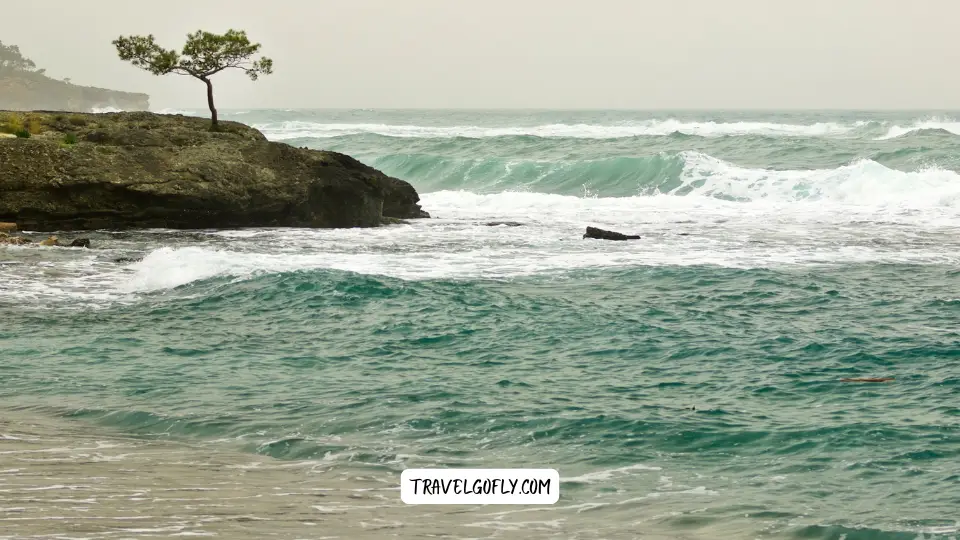 ⭐ Key Info Box / At-a-Glance:
⭐ Key Info Box / At-a-Glance:
- Location: Antalya Province, between Kemer and Olympos
- Coastline: Mediterranean
- Best For: History Enthusiasts, Photography, Nature
- Sand Type: Mixed Sand/Pebble
- Water Quality: Crystal Clear
- Facilities: Basic (Small cafe during season)
- Accessibility: Drive and short walk through ruins
Why It’s Special:
Phaselis offers the rare opportunity to swim in three different bays surrounding an ancient city. The archaeological site of Phaselis features a well-preserved ancient harbor, theater, and streets, with pine forests extending right to the shoreline. The main harbor beach allows visitors to swim where ancient Greek and Roman ships once docked, creating a time-travel experience unlike any other beach in Turkey. The site’s protected status within a national park has preserved both the ruins and the natural beauty of the coastline.
Insider Tips / What to Know:
Visit early in the morning to have this magical place nearly to yourself. The northern bay usually has the calmest water for swimming. Bring water shoes as the beaches are partially pebbly. The entrance fee covers both the archaeological site and beach access. Bring your own food and water as facilities are limited.
Getting There:
Located about 16km south of Kemer on the coastal highway between Antalya and Olympos. There’s a dedicated parking area at the entrance to the archaeological site.
Additional Noteworthy Beaches:
Gümüşlük Beach
⭐ Key Info Box / At-a-Glance:
- Location: Muğla Province, Bodrum Peninsula
- Coastline: Aegean
- Best For: Dining, Sunsets, Tranquility
- Sand Type: Mixed Sand/Pebble
- Water Quality: Clear, Shallow Blue
- Facilities: Excellent seafood restaurants, Basic beach amenities
- Accessibility: Good road access, Parking available
Akyarlar Beach
⭐ Key Info Box / At-a-Glance:
- Location: Muğla Province, Bodrum Peninsula
- Coastline: Aegean
- Best For: Windsurfing, Local Experience
- Sand Type: Fine Golden Sand
- Water Quality: Turquoise Blue
- Facilities: Restaurants, Limited watersports
- Accessibility: Regular dolmuş from Bodrum
Gemiler Beach
⭐ Key Info Box / At-a-Glance:
- Location: Muğla Province, near Kayaköy/Fethiye
- Coastline: Mediterranean
- Best For: Boat Trips, History, Scenery
- Sand Type: Pebble
- Water Quality: Crystal Clear Blue
- Facilities: Limited (Small beach cafes)
- Accessibility: Road access with short walk
Büyük Çakıl Beach
⭐ Key Info Box / At-a-Glance:
- Location: Antalya Province, near Kaş
- Coastline: Mediterranean
- Best For: Sunset Views, Swimming
- Sand Type: Large Pebbles
- Water Quality: Exceptionally Clear Blue
- Facilities: Restaurants overlooking beach
- Accessibility: Short walk from road
Ovabükü Beach
⭐ Key Info Box / At-a-Glance:
- Location: Muğla Province, Datça Peninsula
- Coastline: Aegean
- Best For: Seclusion, Natural Beauty
- Sand Type: Mixed Sand/Pebble
- Water Quality: Pristine Blue
- Facilities: Limited (Few small restaurants)
- Accessibility: Drive to nearby village, short walk
Altınkum Beach (Didim)
⭐ Key Info Box / At-a-Glance:
- Location: Aydın Province, Didim
- Coastline: Aegean
- Best For: Families, Golden Sand
- Sand Type: Fine Golden Sand (name means “Golden Sand”)
- Water Quality: Clean Blue
- Facilities: Full resort amenities
- Accessibility: Excellent, Central location
Marmaris Beach
⭐ Key Info Box / At-a-Glance:
- Location: Muğla Province, Marmaris
- Coastline: Mediterranean/Aegean Junction
- Best For: Urban Beach Life, Nightlife Access
- Sand Type: Mixed Sand/Fine Pebble
- Water Quality: Clean Blue
- Facilities: Full urban amenities
- Accessibility: Central location, Walk from accommodations
Practical Tips for Visiting Turkish Beaches
Best Time to Visit
Turkey beach season officially runs from May to October, but the optimal times are:
- June and September: Perfect balance of warm weather (25-30°C) and fewer crowds
- July and August: Hottest months (30-40°C) with maximum crowds and highest prices
- May and October: Pleasant temperatures (20-25°C) with occasional rain but significantly lower prices and fewer visitors
Water temperatures are warmest in August and September (25-28°C) and coolest in May (20-22°C).
What to Pack
- Sun Protection: High SPF sunscreen, hat, sunglasses (Turkish sun is intense)
- Water Shoes: Helpful for pebbly beaches and sea urchin protection
- Beach Towel: Many hotels don’t allow their towels to be taken to public beaches
- Cash: Smaller beaches may not accept credit cards
- Water Bottle: Staying hydrated is essential in the Mediterranean climate
- Modest Cover-Up: For visiting nearby towns or restaurants
Beach Etiquette & Safety
- Sun Safety: The Mediterranean sun is stronger than many visitors realize. Limit direct exposure between 11am-3pm.
- Currents: Pay attention to flag systems and local advice about swimming conditions.
- Sea Urchins: Present near rocky areas; water shoes are recommended.
- Dress Code: Turkish beaches are relaxed, but when leaving the beach area, cover up appropriately for local sensibilities.
- Wildlife Protection: Respect cordoned areas for turtle nesting, don’t leave trash, and don’t remove natural materials from protected beaches.
- Photography: Ask permission before photographing locals.
Understanding Blue Flag Beaches
Turkey ranks 4th worldwide for Blue Flag beaches, with over 450 beaches meeting this international standard. The Blue Flag certification indicates:
- Excellent Water Quality: Regular testing ensures clean, safe swimming conditions
- Environmental Education: Programs and information are available about local ecosystems
- Safety Services: Lifeguards or lifesaving equipment and first aid are available
- Environmental Management: Proper waste management and recycling facilities
When planning your beach visits, look for the Blue Flag symbol for assured quality and safety standards.
Frequently Asked Questions (FAQ Section)
What is the #1 beach in Turkey?
Ölüdeniz is widely considered Turkey most iconic beach, famous for its blue lagoon and paragliding opportunities. However, “best” is subjective Patara offers the longest stretch of sand, Kaputaş the most dramatic setting, and Iztuzu the most significant conservation value.
Are beaches in Turkey sandy or pebbly?
Turkey has both sandy and pebble beaches. The longest, most expansive beaches (Patara, Iztuzu, Side East) tend to be sandy, while many scenic coves feature pebbles or a sand-pebble mix. The Aegean coast has more pebble beaches, while the Mediterranean coast offers more sandy options.
Is the sea warm in Turkey?
Yes, especially during summer months. Water temperatures range from 20°C (68°F) in May to 28°C (82°F) in August and September. The Mediterranean coast generally has slightly warmer waters than the Aegean, while the Black Sea is considerably cooler.
When is the best time to visit Turkish beaches?
June and September offer the ideal combination of warm weather, warm sea temperatures, and fewer crowds. July and August are hottest but also most crowded and expensive.
Are Turkish beaches family-friendly?
Many Turkish beaches are excellent for families, particularly Icmeler, Ölüdeniz (Blue Lagoon section), Side East Beach, Cleopatra Beach, and Konyaaltı. Look for beaches with gradual slopes into the water and good facilities.
Do I need to pay to access beaches in Turkey?
Most beaches in Turkey are free to access, but sun loungers and umbrellas typically cost between 50-150 Turkish Lira per set. Some beaches within national parks or archaeological sites (Iztuzu, Patara, Olympos, Phaselis) have entrance fees that cover both beach access and site exploration.
What should I be careful about at Turkish beaches?
Pay attention to sea conditions (flags indicate safety), watch for sea urchins near rocky areas, protect yourself from the strong Mediterranean sun, and respect wildlife protection measures, particularly at turtle nesting beaches.
Which Turkish beaches have the clearest water?
Kaputaş Beach, Butterfly Valley, Kabak Beach, and the bays around Kaş are known for exceptionally clear water. Generally, pebble beaches have clearer water than sandy ones as there’s less sediment to cloud the water.
Can I find quiet, uncrowded beaches in Turkey?
Yes, even in high season. Kabak Beach, Ovabükü, Butterfly Valley, Cirali’s northern section, and the far reaches of Patara remain relatively peaceful. Visiting outside peak season (July-August) or early/late in the day also helps avoid crowds.
Are there nude beaches in Turkey?
Public nudity is not permitted on Turkish beaches. While some very remote coves might occasionally be used unofficially, Turkey does not have designated naturist beaches, and public nudity can result in fines.
Conclusion
Turkey’s coastline offers an incredible diversity of beach experiences, from the vibrant turquoise waters of Ölüdeniz and Kaputaş to the golden sands of Patara and Iztuzu. Whether you’re seeking family-friendly shores, romantic coves, adventure opportunities, or historically significant settings, Turkey beaches deliver unforgettable Mediterranean experiences.
The combination of crystal-clear waters, stunning landscapes, rich historical context, and excellent tourism infrastructure makes Turkey one of the world’s premier beach destinations. By visiting outside peak seasons and exploring beyond the most famous locations, you’ll discover your own perfect stretch of Turkish coastline.
Which Turkish beach calls to you the most? Have you visited any of these stunning shores? Share your experiences or questions in the comments below!
